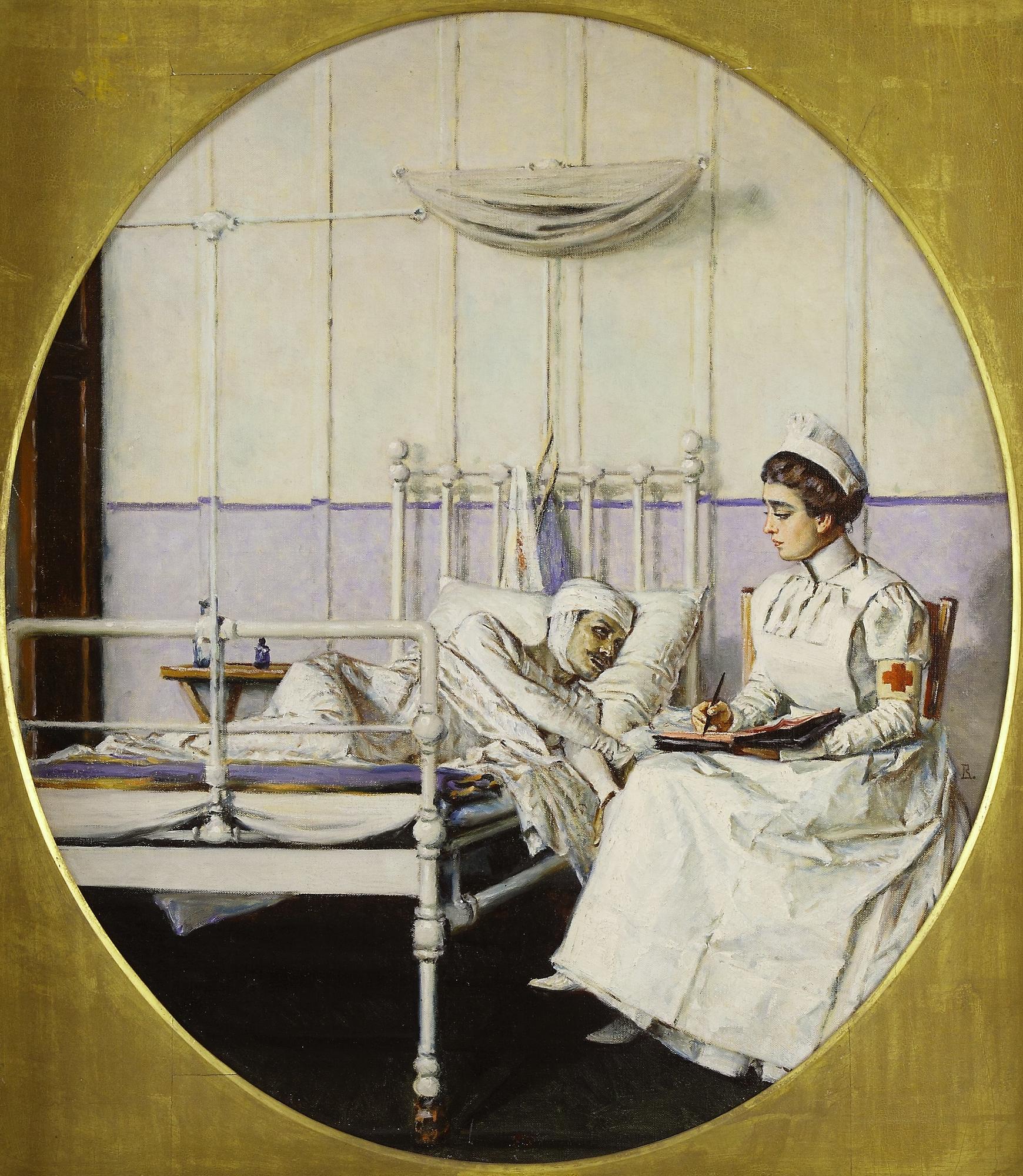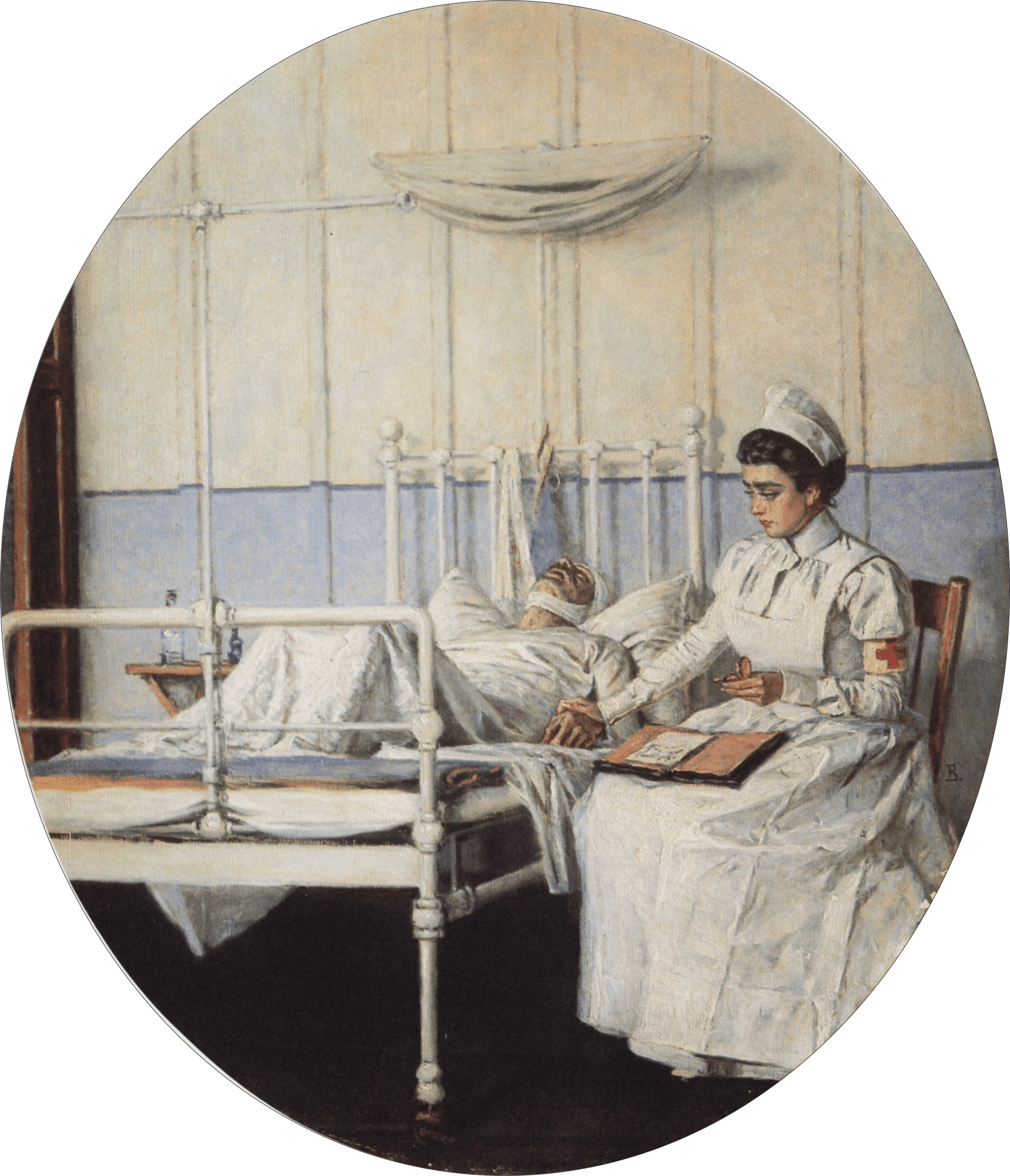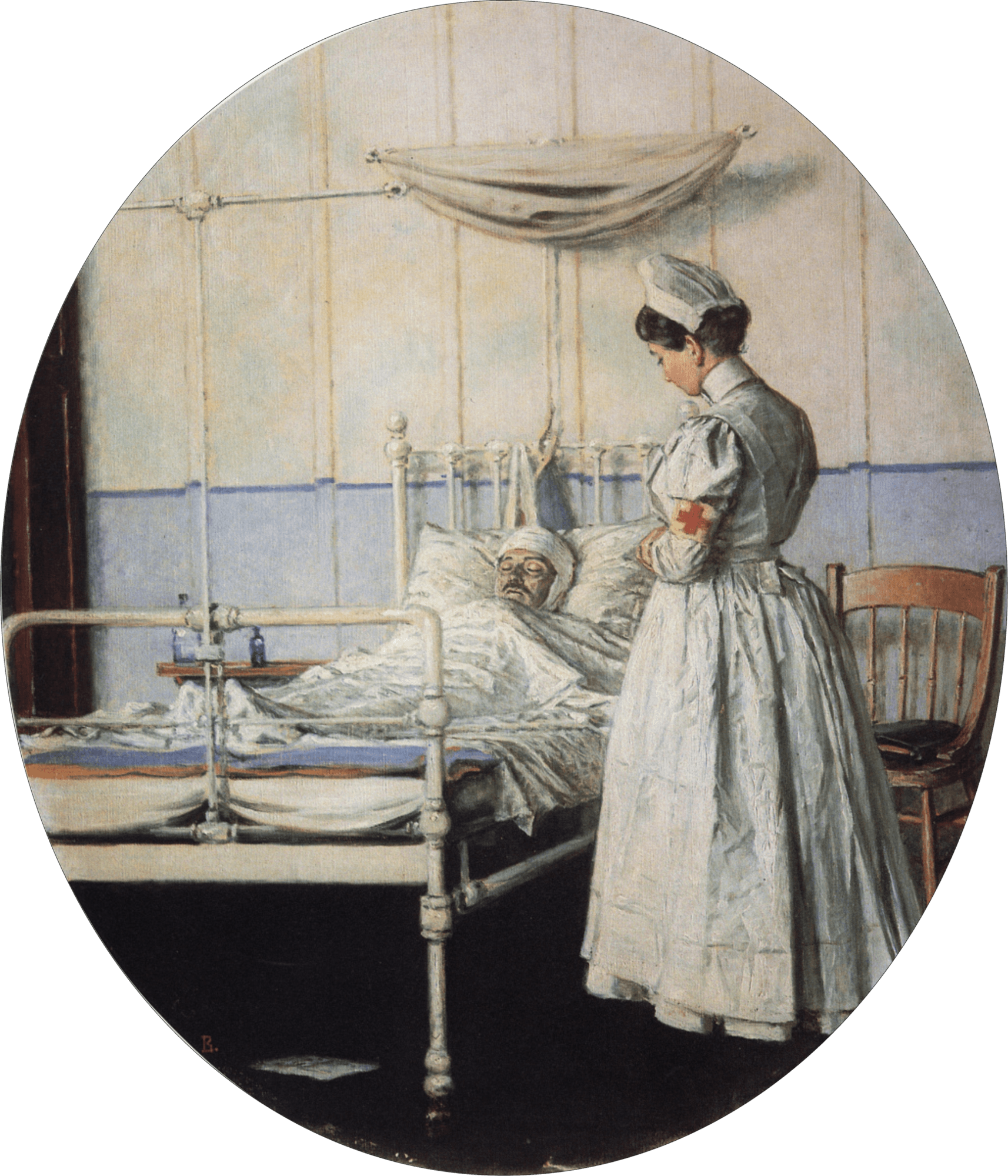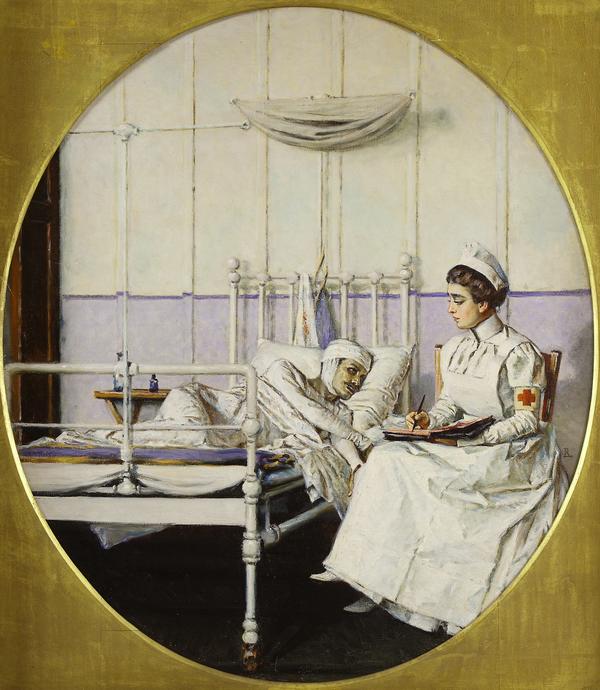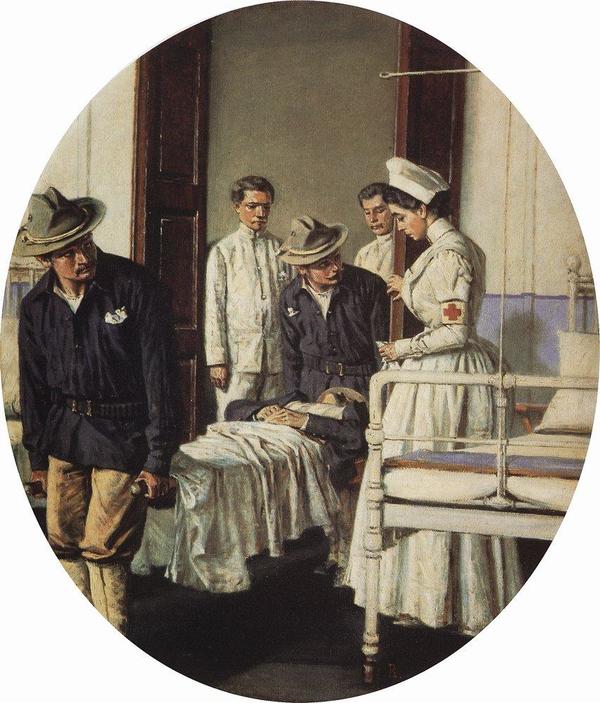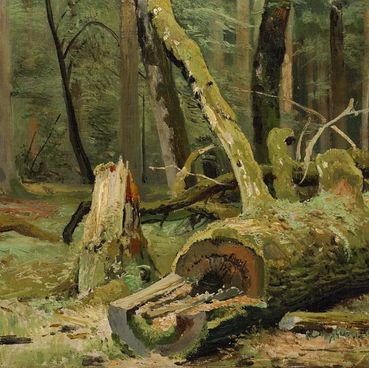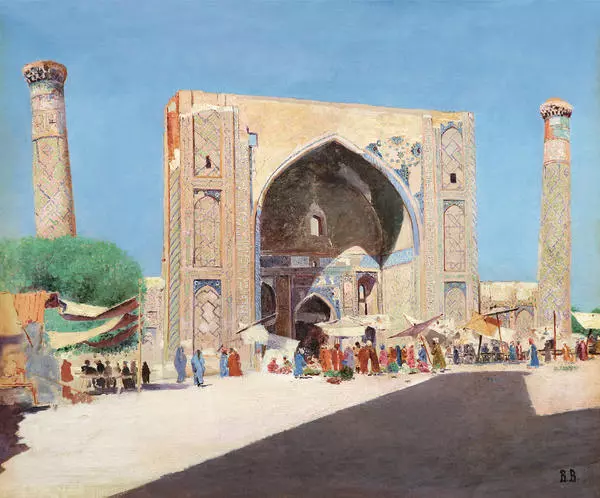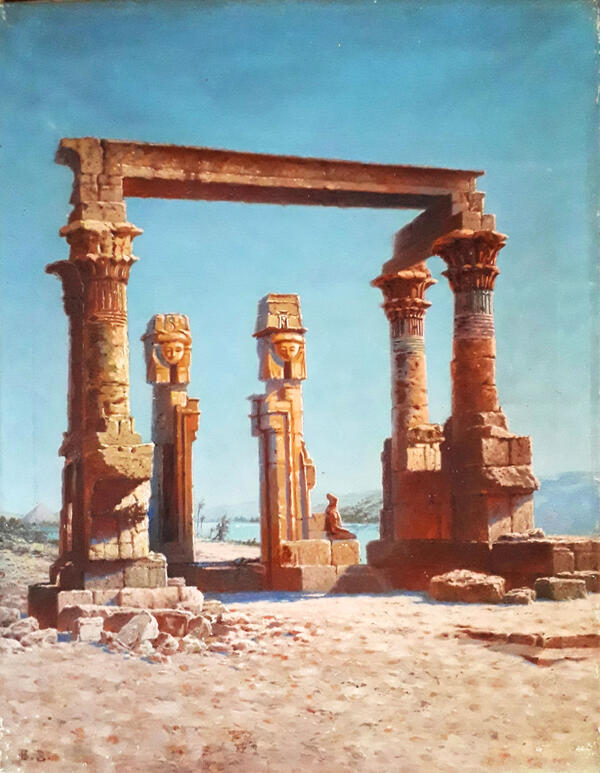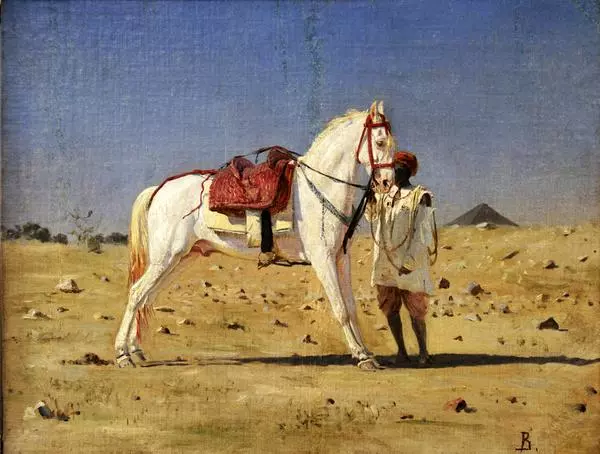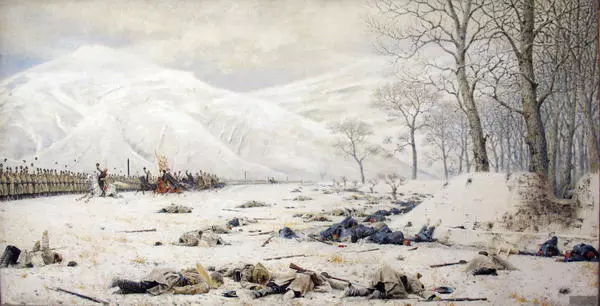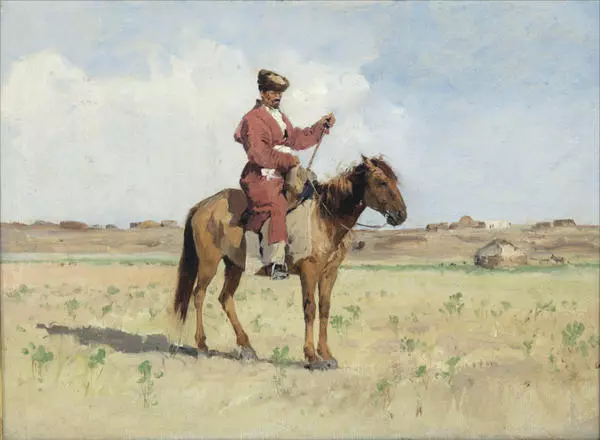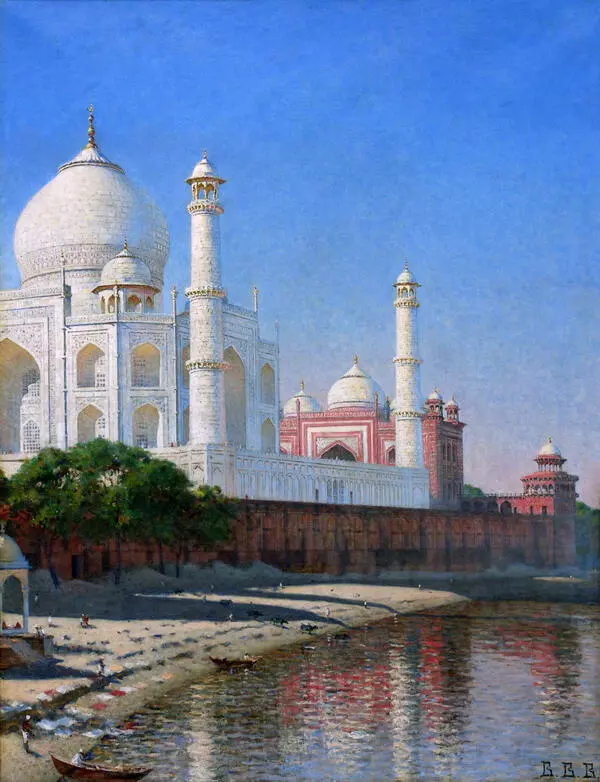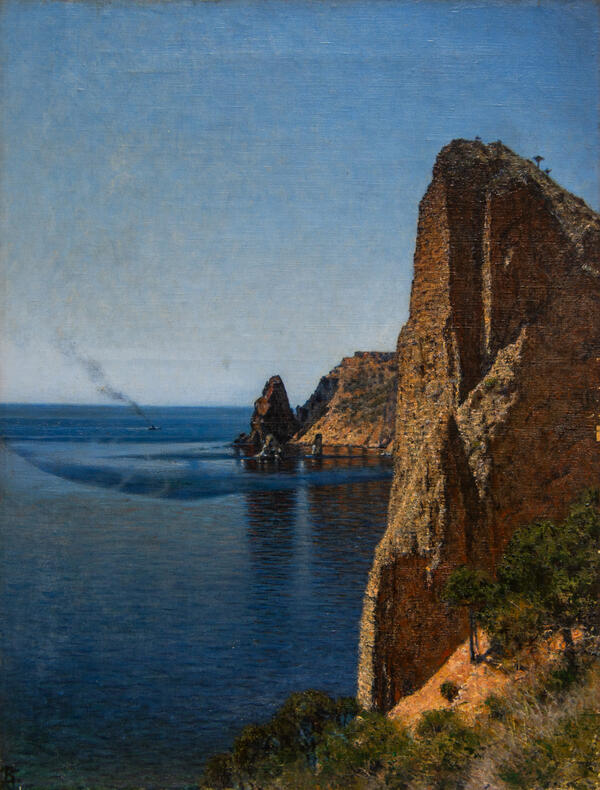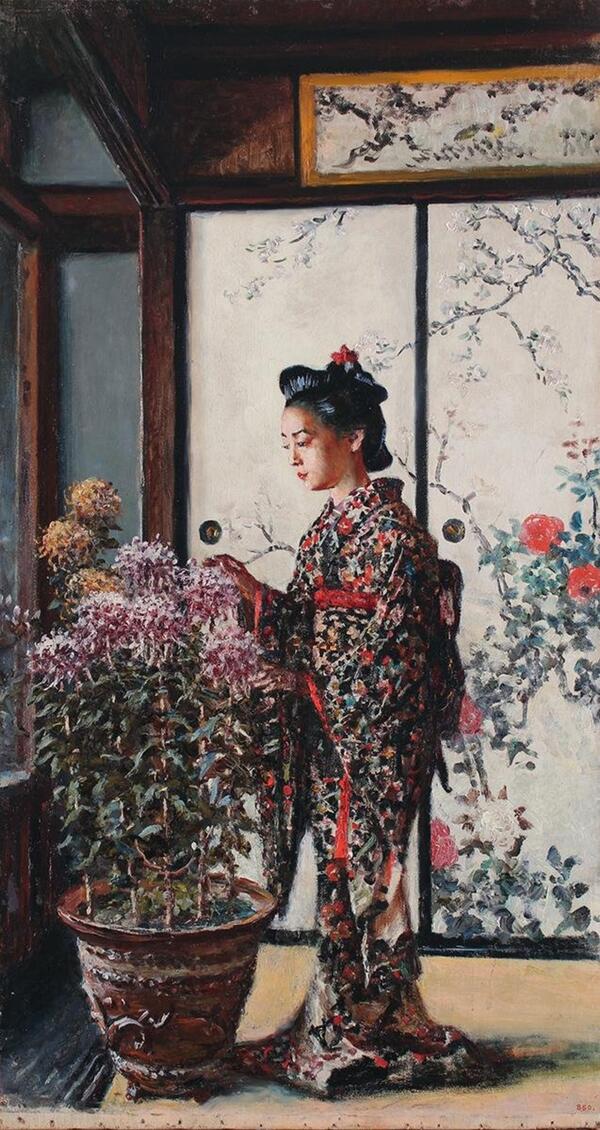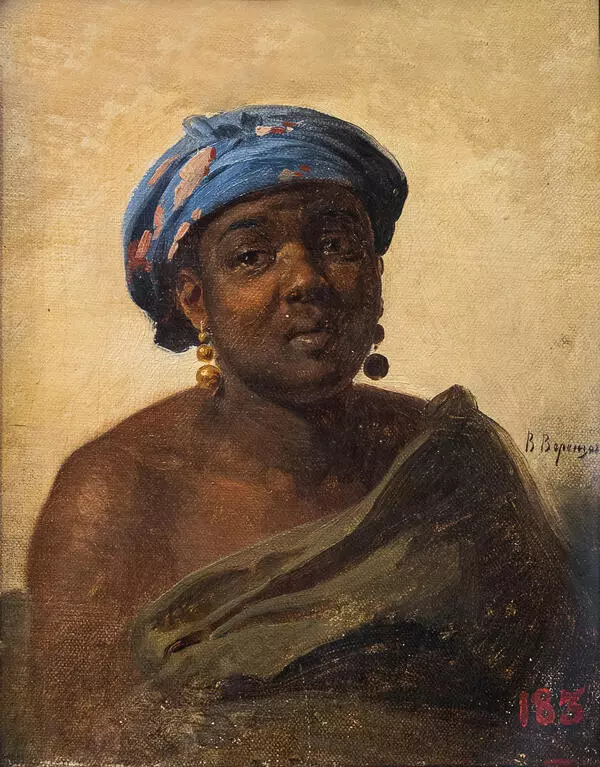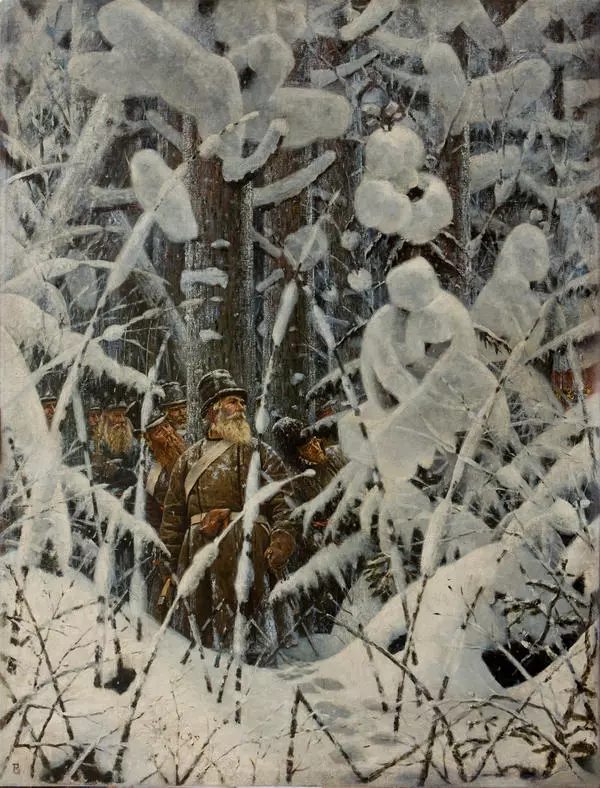Vasily Vereshchagin painted Letter to mother in 1901. It was part of the five-picture series Wounded, or Letter to home, also known as the hospital series, which tells the story of an American soldier who was wounded in a battle during the Spanish-American war (1898-1899) and died in hospital.
1 / 3
Letter to mother
Время создания
1901
Размер
102,7x88,4 cm
Техника
oil on canvas
Коллекция
21
Открыть в приложении#1
Vasily Vereshchagin
Letter to mother
#2
#5
Before starting to work on the project Vereshchagin set off to the Philippines, the former combat area. As the painter’s son wrote later, his father visited battle sites, talked to war veterans and made “many sketches of the terrain, portrayed local characters and American soldiers”.
#6
Compositionally this picture was the only one not framed in an oval, but it was the artist himself who included it in the series. Compositionally this picture was the only one not framed in an oval, but it was the artist himself who included it in the series.
The next painting In the hospital clearly talks about the hero’s poor health: he remains unconscious as he is brought to the hospital on a stretcher.The next painting In the hospital clearly talks about the hero’s poor health: he remains unconscious as he is brought to the hospital on a stretcher.
#7
Letter to mother, the painting from the museum collection, comes third in the series. Here the soldier is already lying flat on the hospital bed, with the nurse writing down a letter he tries to dictate. Seeking to truthfully convey the girl’s emotions, the artist worked through fine details of her facial expressions — now tender and attentive, now worried, and now deeply in grief. Vereshchagin’s model for the nurse was his second wife Lidiya Vasilyevna; she posed for the picture wearing genuine nurse uniform Vereshchagin had brought from the Philippines together with a genuine hospital bed. Modeling for the soldier was Vereshchagin’s servant Vasily Platonov.
#8
The last two pieces in the series bring the story to the tragic ending. Interrupted letter shows the wounded soldier who got worse and lies with his head thrown back, as the nurse is taking his pulse.
#10
For centuries, battle painters portrayed warfare as a colorful parade of troops and triumph of the victors. Vereshchagin, in contrast, spoke out as a humanist about atrocities of war, sharing the tragic stories of people involved in it. Andrei Lebedev, scholar of his legacy, wrote: ‘As he regarded invasive war as brazen crime, Vereshchagin condemned their initiators and leaders, unveiling the misery and suffering of people in a powerful and vivid way. War is presented to the viewer as it was, with all its hardships, brutality, grief and deaths’.
#11
Yaroslavl Art Museum
читать дальшескрыть
00:00
00:00
1x
Letter to mother
Время создания
1901
Размер
102,7x88,4 cm
Техника
oil on canvas
Коллекция
21
Открыть в приложении
Поделиться
